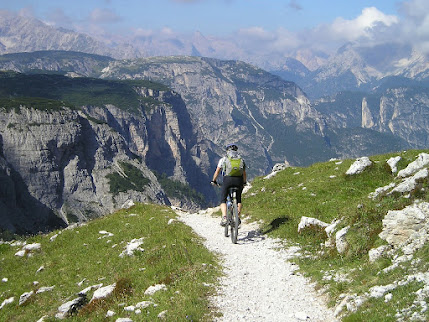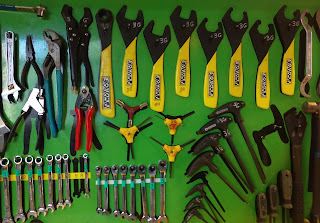KNOW HOW GEARS WORK ?
Bicycles have gears to help you ride more efficiently when going uphill, downhill, and on the flat across all varied terrain. Without easy gears, you'd grind to a halt when trying to go up steep hills and without bigger gears, well you wouldn't be able to pedal fast enough when going downhill. But how do gears actually work? Before we explain how bicycle gears work, we first need to know the different parts, beginning with the shifters. These are located on the handlebars and are used to change gear. On older bikes, these used to be located on the down tube here, but on modern bikes, they're on the bars.
Next, we have the cassette. This is the collection of different sized cogs or sprockets on the rear wheel. These are the chain rings and they’re turned by the pedals. Bikes typically have one, two, or three chain rings. The chain connects the chain rings with the cassette.
We then have the derailleur, one at the back, and if you have more than one chain ring, you'll have one at the front too. The derailleurs are called derailleur because they literally derail the chain, guiding it from one sprocket to the next as they move from side to side. Most derailleur moves from side to side thanks to a cable that is connected to the gear shifter.
When you click the shifter, it pulls the cable tighter, which in turn, pulls the derailleur a measured amount up the cassette. This also compresses a spring. To shift down, clicking the shifter releases the tension in the cable and allows the compressed spring to now extend a measured amount to guide the chain into the next gear. The most high tech components don't have cables, but are now self-contained electronic systems. Instead of the cables actuating the gear change, the derailleur move using little electronic motors called servos. The rear derailleur contains springs and this cage with little pulley wheels in, which help guide the chain and, crucially, keep it under tension. This is important because without it, changing the size of the gear could make the chain slack and then, it would slip. To help with the changing of gears and make it smoother, the teeth on the cassette and chain rings are specially shaped with little ramps to help guide the chain. Bikes have gears to help you with changes in gradient and if desired, to increase speed on the flat.
The smallest chain ring at the front, paired with the biggest cog at the back, is the easiest gear, ideal for steep climbs or setting off from a stand still. If your chain ring has 34 teeth and your biggest cog at the back also has 34 teeth, that is a one to one gear ratio, a relatively easy gear to turn. The rear wheel will turn once for every pedal stroke. At the opposite end, if you shift into your fastest and hardest gear, the ratio is much bigger. For example, if your biggest chain ring is 50 and your smallest cog at the back is 11, that result in a ratio of 4.55, meaning the rear wheel will spin 4.55 times for every one rotation of the pedals. This is a harder gear to get going, but is useful once you're travelling at speed or going downhill.




Comments
Post a Comment